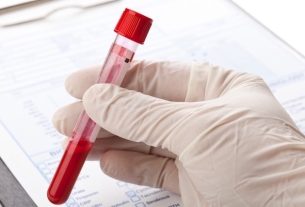Bacteriuria corresponds to the presence of bacteria in the urine, which may be due to inadequate urine collection, contamination of the sample, or due to urinary infection, and other changes in the urinalysis may also be observed in these situations, such as the presence of leukocytes, epithelial cells and, in some cases, red blood cells.
The presence of bacteria in urine is checked through a type I urine test, which indicates the presence or absence of these microorganisms. In addition, other parameters of the urinalysis must be evaluated by the doctor, such as the presence of leukocytes, casts and red blood cells, pH and color of the urine.
According to the results of the urine test, the general practitioner, urologist or gynecologist can indicate the appropriate treatment, if necessary, or request additional tests.

How to identify bacteriuria
Bacteriuria is identified through a type 1 urine test, in which, by viewing the urine under a microscope, it is possible to observe whether or not there are bacteria, and the test report indicates:
- Missing bacteriawhen no bacteria are observed;
- Rare bacteria or +when 1 to 10 bacteria are visualized in 10 microscopic fields observed;
- Some bacteria or ++when between 4 and 50 bacteria are observed;
- Common bacteria or +++when up to 100 bacteria are observed in 10 read fields;
- Numerous bacteria or ++++when more than 100 bacteria are identified in the observed microscopic fields.
In the presence of bacteriuria, the doctor who requested the test must evaluate the urine test as a whole, observing any other changes present in the report so that a diagnosis can be reached and treatment can begin. Generally, when the presence of rare or some bacteria is indicated in the report, it is indicative of the normal microbiota of the urinary system, and is not a reason for concern or initiation of treatment.
Normally, in the presence of bacteria in the urine, a urine culture is requested, especially if the person presents symptoms, so that the species of the bacteria, the number of colonies formed and the resistance and sensitivity profile of the bacteria can be identified, this information being important for for the doctor to indicate the most appropriate antibiotic for treatment. Understand how urine culture is performed with an antibiogram.
What could be bacteria in urine
The main causes of bacteriuria are:
1. Sample contamination
Sample contamination is one of the most frequent causes of bacteria in urine, especially when several epithelial cells, the presence of mucus and the absence of leukocytes are observed. This contamination occurs at the time of collection, when the person does not perform the correct hygiene for collection or does not discard the first jet of urine. In these cases, most of the time, the bacteria identified are part of the urinary system and do not pose a health risk.
What to do: If no other changes have been identified in the urine test, the doctor may not take into account the increase in the number of bacteria, however, in some cases, a new collection may be requested, and this time it is important to correctly clean the intimate region. , discard the first jet and take it to the laboratory within 60 minutes after collection to be evaluated.
2. Urinary infections
When it is not sample contamination, the presence of bacteria in the urine, especially when frequent or numerous bacteria are seen, may be indicative of a urinary system infection. In addition to bacteriuria, some or numerous epithelial cells can be seen, as well as several or numerous leukocytes depending on the microorganism responsible for the infection and its quantity.
To confirm a urinary infection, especially when there are symptoms, the doctor usually recommends a urine culture to identify the bacteria responsible for the infection and its quantity, normally indicative of infection when there are more than 1,000,000 cfu/mL. Find out more about urine culture.
What to do: Antibiotic treatment for urinary infections is normally only indicated when the person has symptoms related to the infection, such as pain or burning when urinating, bloody urine or a feeling of heaviness in the bladder, for example. In these cases, the general practitioner, urologist or gynecologist may recommend the use of antibiotics according to the bacteria identified and its sensitivity profile.
However, when no symptoms are observed, the use of antibiotics is normally not indicated, as it can induce bacterial resistance, which makes treatment more complicated.
3. Tuberculosis
Although it is rare, it is possible that in systemic tuberculosis bacteria can be found in the urine and, therefore, the doctor may request a urine test to test for Mycobacterium tuberculosiswhich is the bacteria responsible for tuberculosis.
Typically the search for Mycobacterium tuberculosis in urine is only performed as a way of monitoring the patient and the response to treatment, with the diagnosis being made through sputum examination or tuberculin testing, known as PPD. Understand how tuberculosis is diagnosed.
What to do: When the presence of bacteria is verified in the urine of a patient with tuberculosis, the doctor must assess whether the treatment is being carried out correctly or whether the bacteria has become resistant to the indicated medication, which may indicate a change in the antibiotic or therapeutic regimen. Tuberculosis treatment is done with antibiotics and must be continued even if the person no longer has symptoms, because not all bacteria may have been eliminated.

Sign up for our newsletter and stay up to date with exclusive news
that can transform your routine!
Warning: Undefined array key "title" in /home/storelat/public_html/wp-content/plugins/link-whisper-premium/templates/frontend/related-posts.php on line 12
Warning: Undefined array key "title_tag" in /home/storelat/public_html/wp-content/plugins/link-whisper-premium/templates/frontend/related-posts.php on line 13



